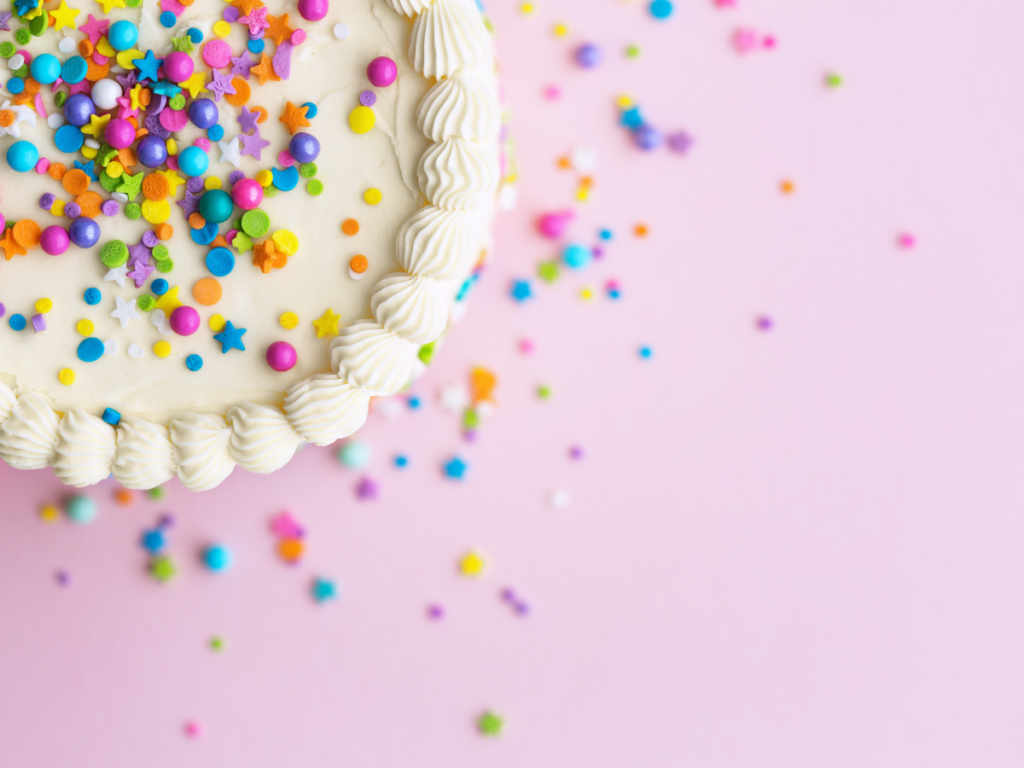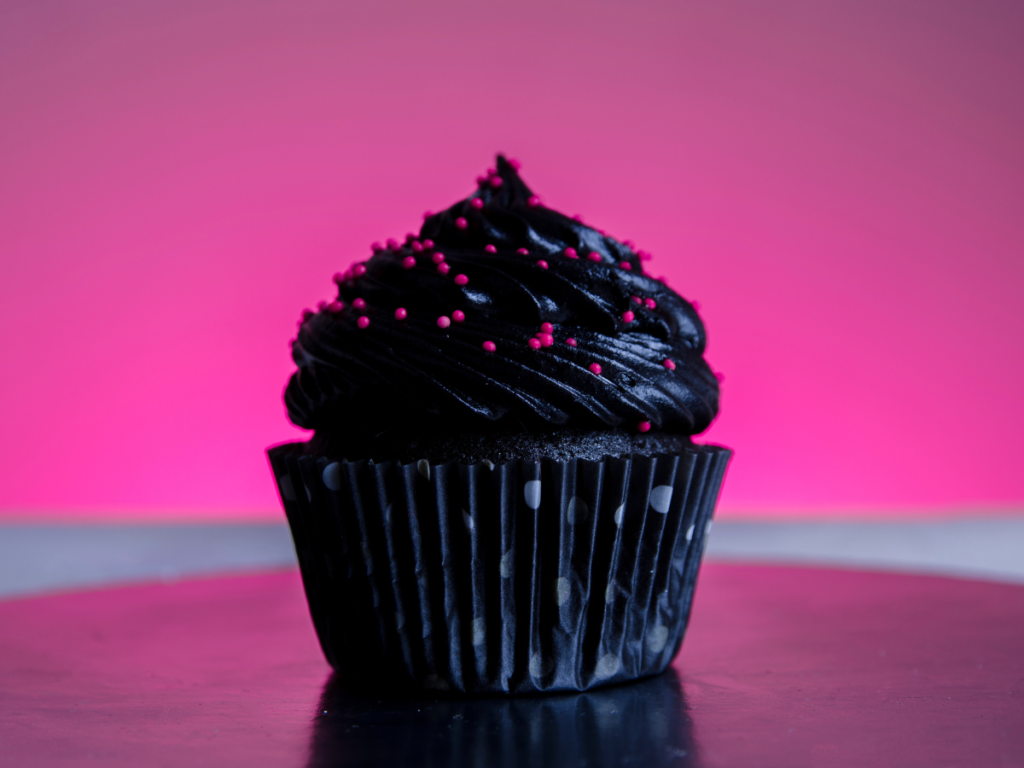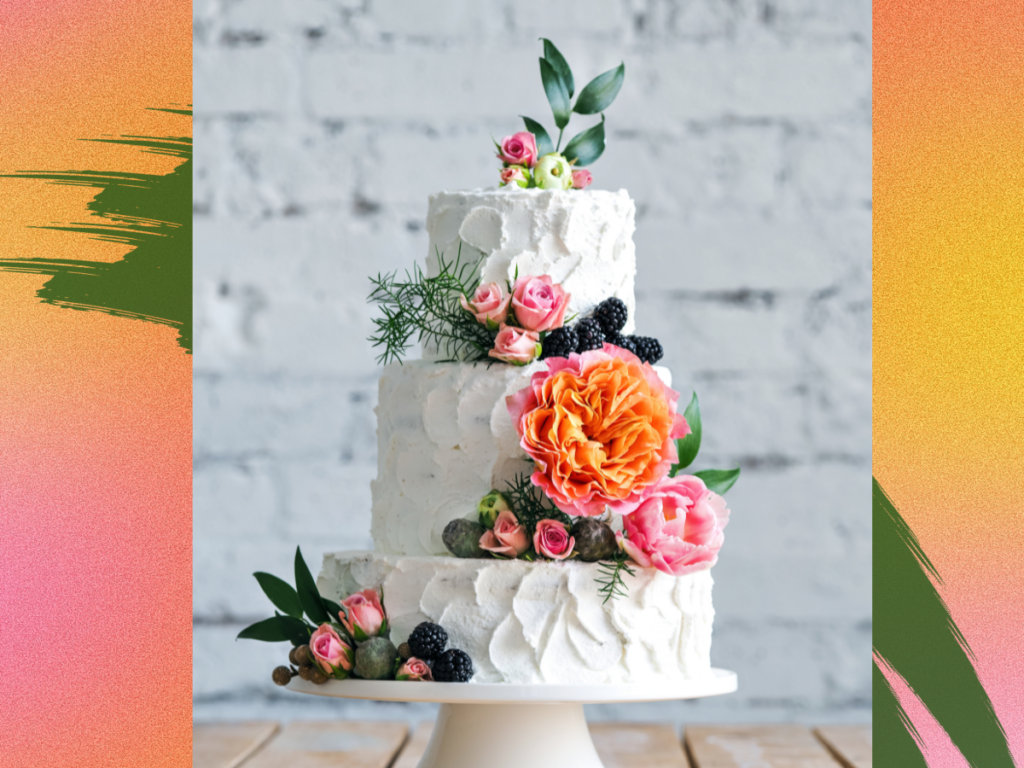Disclaimer: This article may contain affiliate links.
Buttercream frosting, celebrated for its ability to complement a variety of tastes and loved for its creamy and fluffy texture, is a baking essential. This buttercream frosting guide will help you understand the basics so you can explore all the possibilities!

Buttercream Frosting Guide: Types & Recipes
Types of Buttercream Frosting
- American Buttercream: Simple, sweet, and easy to make. Ideal for beginners.
- Swiss Meringue Buttercream: Light and silky, made by whipping egg whites and sugar.
- Italian Meringue Buttercream: A more stable option, made with sugar syrup.
- French Buttercream: Rich and decadent, prepared with egg yolks.
- German Buttercream: Creamy and custard-based, perfect for filling pastries.
Recipes for American, French, and Swiss Buttercream
1. Basic American Buttercream
You will need:
- 1 cup (2 sticks) unsalted butter, at room temperature
- 2 cups powdered sugar
- 1 teaspoon vanilla extract
- Milk or water for consistency adjustment (optional)
- Pinch of salt (to balance sweetness)
Instructions:
- Use an electric mixer or a stand mixer to beat your butter until it is creamy and smooth, about 2-3 minutes.
- Add in your powdered sugar in small amounts as you beat.
- Add your vanilla.
- Check consistency.
- To check your texture, scoop about a spoonful and tap on the side. It should fall after two taps. If it falls without tapping, it may need a small amount of powdered sugar, or your butter needs to firm up in the fridge before icing.
- If it sticks and does not fall after a couple of taps, you may need to mix more until the butter can soften, or add a couple of teaspoons of milk or water until it’s right. Just remember the butter will continue to soften a little as it sits, so do not overuse your thinning liquid.
- Once you have the consistency, beat on high for 3-5 minutes until it is light and fluffy.
2. French Meringue Buttercream
You will need:
- 4 large egg yolks
- 1 cup granulated sugar
- 1 cup (2 sticks) unsalted butter, at room temperature
- 1 teaspoon vanilla extract
- A pinch of salt (to balance sweetness)
Instructions:
- Fill a saucepan with about 1-2 inches of water and place it over medium heat. Bring the water to a simmer but not a boil. Place a heatproof mixing bowl (stainless steel or glass) on top of the saucepan, ensuring that the bottom of the bowl doesn’t touch the water. This setup will be your double boiler.
- In the heatproof bowl, whisk together the egg yolks and sugar until well combined.
- Place the bowl over the simmering water, creating a gentle heat underneath. Whisk continuously as the mixture warms. Make sure the sugar dissolves completely, and the mixture will become smooth. Heat it to about 160°F (71°C) to ensure the egg yolks are safe to consume.
- Remove the bowl from the heat and use an electric mixer or a stand mixer with a whisk attachment to beat the egg yolk mixture. Beat on medium-high speed until it becomes thick and pale, and forms stiff peaks. This will take about 5-7 minutes. The bowl should also return to room temperature.
- Once the egg yolk mixture has cooled down, reduce the mixer speed to medium and start adding small pieces of softened butter, one at a time, while continuing to mix. Be patient, as this process can take a few minutes.
- Add the vanilla extract and a pinch of salt to the mixture. Continue to beat until everything is well combined and the frosting is smooth and creamy.
- Increase the mixer speed to high and beat for an additional 2-3 minutes until the French meringue buttercream is fluffy and silky.
3. Swiss Meringue Buttercream
You will need:
- 4 large egg whites
- 1 cup granulated sugar
- 1 1/2 cups (3 sticks) unsalted butter, at room temperature
- 1 teaspoon pure vanilla extract
- A pinch of salt (to balance sweetness)
Insructions:
- Create a double boiler setup (See step 1 for French meringue buttercream frosting)
- In the heatproof bowl, whisk together the egg whites and sugar. This mixture will be used to create a stable meringue.
- Place the bowl over the simmering water and whisk continuously as the mixture heats. Continue until the sugar has completely dissolved and the mixture reaches a temperature of about 160°F (71°C). This ensures that the egg whites are safe to consume. Make sure your sugar dissolves so your frosting is not grainy.
- Once the sugar has dissolved and the mixture is warm, remove the bowl from the heat. Using an electric mixer or a stand mixer with a whisk attachment, whip the egg white mixture on high speed until it forms stiff, glossy peaks. This usually takes about 5-7 minutes.
- Allow the meringue to cool to room temperature. The bowl should feel cool to the touch.
- Reduce the mixer speed to medium, and begin adding small pieces of softened butter, one at a time, while continuing to mix. The mixture may appear curdled or soupy at some point, but keep mixing. It will come together.
- Once the butter is fully incorporated, add vanilla extract and a pinch of salt. Continue to beat until everything is well combined, and the Swiss meringue buttercream is smooth and creamy.
- Increase the mixer speed to high and beat for an additional 2-3 minutes until the Swiss meringue buttercream is fluffy, silky, and well-aerated.
Buttercream Frosting Guide: Kitchen Equipment Recommendations
1. Stand Mixer- KitchenAid
This is my favorite mixer and is a must if you are interested in baking regularly in your kitchen! Also, check out these stunning bowls made for the mixer here if you’re into the aesthetic.
2. Hand mixer- Hamilton Beach
This is a great option and is a very useful tool in the kitchen. I love this one because it comes with a storage container as well.
3. Spatula Set
These spatulas are my favorite. They come in a few different sizes. I find myself using all of them when I am baking. BONUS: They come in many awesome colors (I love a colorful kitchen!)
4. Frosting Offset Spatula
This is what you need to get that wonderful, smooth finish when icing a cake. These are dishwasher-safe and stainless steel. You have two angled options and a straight option.
5. Whisk
This balloon whisk has countless options for baking, but it is especially great for keeping those eggs and sugar moving over that double boiler.
6. Mixing bowls
These are great for coloring your buttercream or using with your hand mixer. They are microwave, dishwasher, and freezer safe, which makes them so versatile.
7. Measuring Cups & Spoons
I love these classic stainless steel measuring cups and spoons. They have held up wonderfully in my kitchen.
Buttercream Frosting Guide: Tips & Techniques
1. Buttercream as a base for any flavor
The recipes above are basic, but you can add any additional flavors you like. Some ideas include using other extracts in place of, or along with, the vanilla. Adding fruit purees, chunks, juices, or zest is another option, as is incorporating cocoa powder or chopped candies or nuts.
When adding in liquids, be careful to balance with powdered sugar so your mix stays at the right consistency. You can also add spices like cinnamon and nutmeg. If you find it too sweet, consider adding pinches of salt to balance it. Be creative! Check out this article about ways you can incorporate fruits into your buttercream.
2. Consistency issues
If you find your frosting is too loose, you can add a small amount of powdered sugar or put it in your refrigerator for a bit to stiffen your butter. If you find it too thick, add milk or water (Just a small amount is all you need!). Just be sure your icing is not very cold from the fridge when you do this, your butter will soften as it warms up to room temp.
3. Storage
Make sure your buttercream has cooled completely. It needs to be stored in an airtight container. You don’t want any condensation. Store in the fridge for up to a week. In the freezer, it should be good for 2-3 months. When you are ready to use, try to let the buttercream thaw slowly and whip it up so its nice fluffy texture is restored!
4. If your buttercream frosting separates
Sometimes buttercream splits. The key is to whip it on high for about 5 minutes or until it comes back together. In most cases, this will get your texture back.
5. Coloring buttercream frosting
When you color buttercream you want to make sure you are using gel-based food coloring. Using liquid food coloring can throw off your texture. These AmeriColor gels are fantastic! They are really nice because they have a dropper lid that helps things stay clean. If you are a beginner with a smaller budget, these Wilton ones certainly do the trick.

Bonus coloring tip: Black Buttercream
Black is often a tough color to achieve and no one wants to use bottles of food coloring just to get a nice, deep color. There are two methods you can try: heating your gel color and black cocoa powder. Add about 1/2 cup of extra dark cocoa powder (click here for a good one). Just be aware the cocoa powder will add a light chocolate flavor to your buttercream.
You can also heat your gel coloring to intensify the color. This technique is used to create vibrant shades in buttercream or other frosting. It works by breaking down the gel color molecules with heat, allowing them to blend more evenly and deeply into the mixture.
Add several drops to a small amount of buttercream and heat for about 10 seconds (it will be more of a liquid). Let it cool and use it as a concentrated version to mix into the rest of your buttercream. You can tweak the amount of gel color to buttercream based on how much buttercream you are coloring.

Conclusion:
I hope this buttercream frosting guide has helped you better understand the basics of buttercream. There may be some mistakes at first, but stick with it. Once you master your technique, you can use buttercream as a staple in your baking creations!
